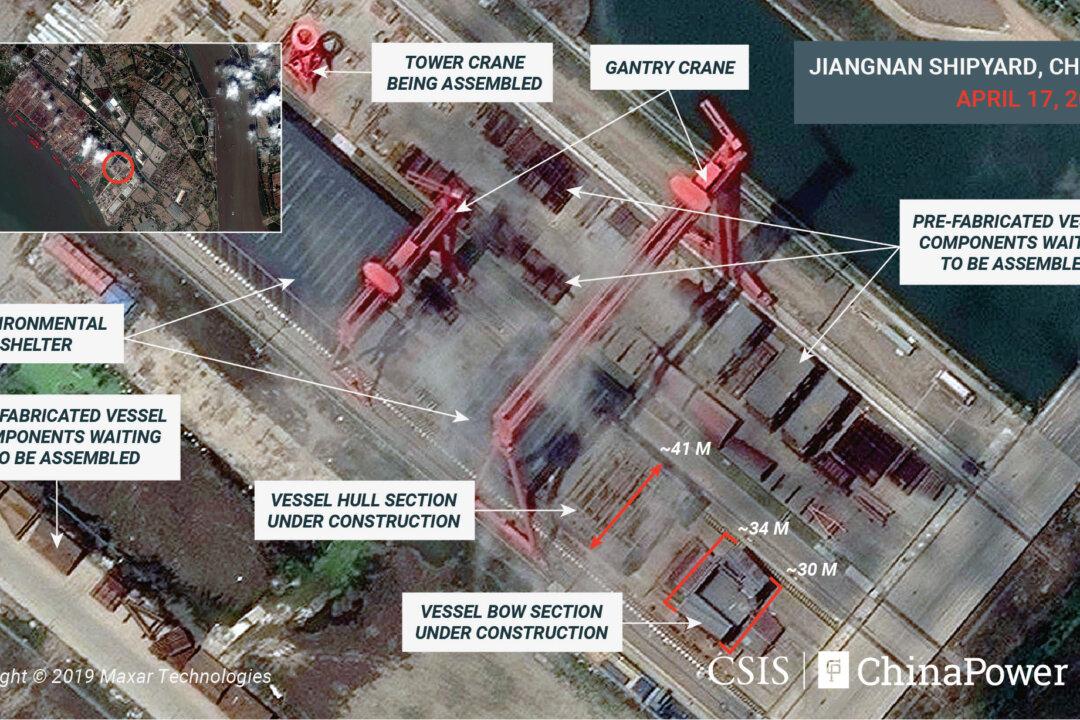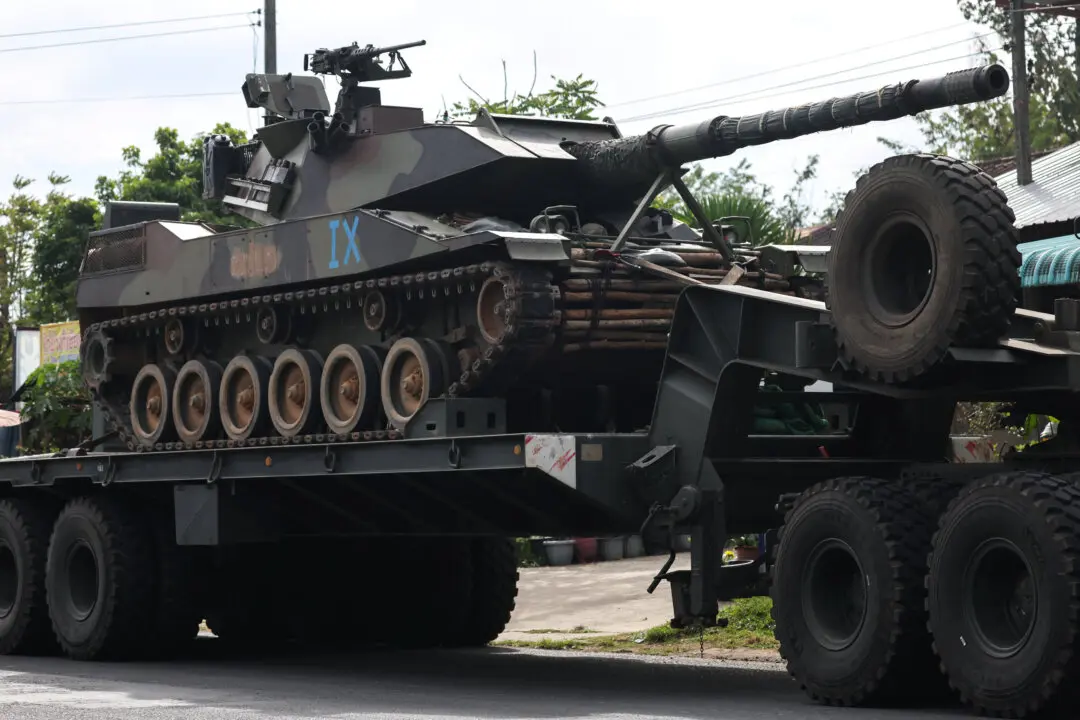HONG KONG/BEIJING—Construction of China’s first full-sized aircraft carrier is well underway, according to satellite images obtained and analyzed by a U.S. think tank.
The images from April, provided to Reuters by the Center for Strategic and International Studies (CSIS) in Washington, reveal considerable recent activity during the past six months on a large vessel at the Jiangnan shipyard outside Shanghai.





